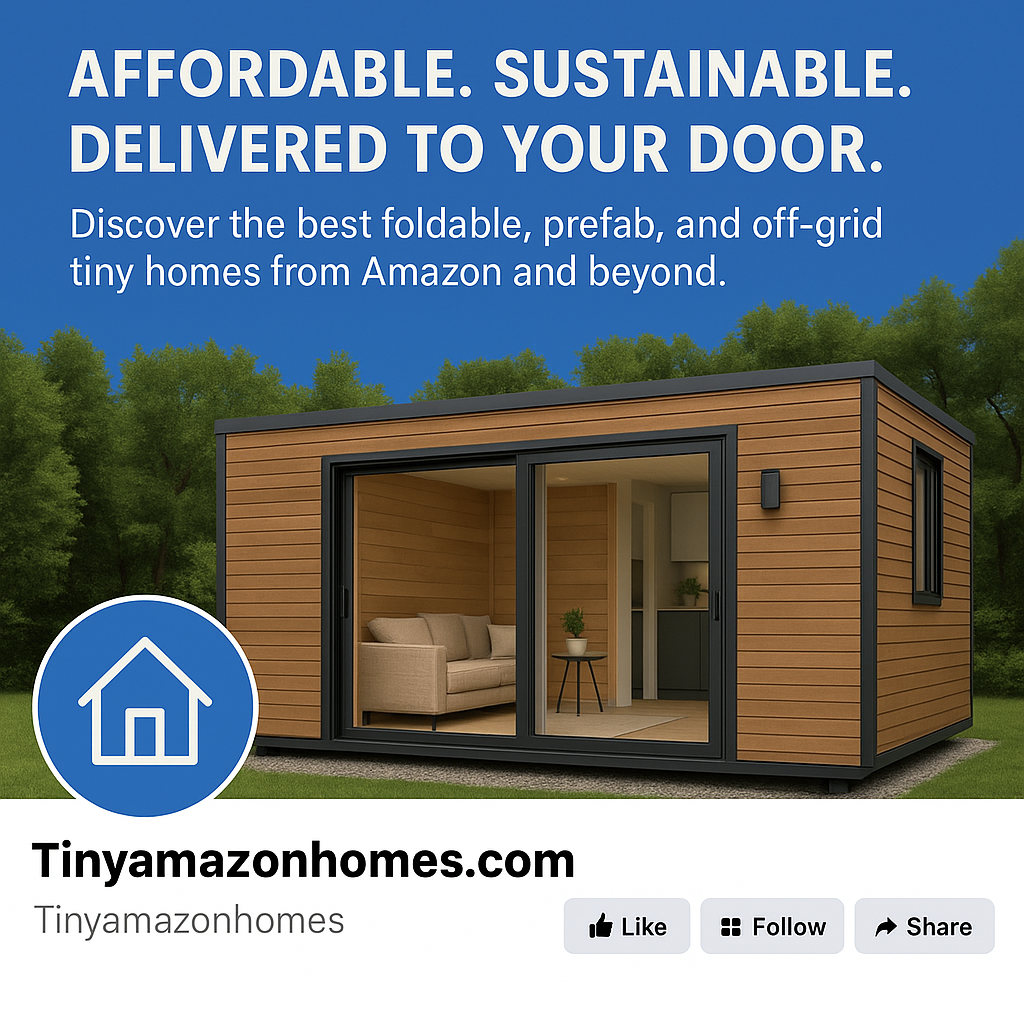The tiny home movement has captured the imagination of people seeking simpler, more affordable, and environmentally conscious living options. These compact dwellings, typically ranging from 100 to 400 square feet, offer a revolutionary approach to housing that challenges our traditional notions of what makes a home. As housing costs soar and environmental concerns grow, tiny homes present a compelling alternative that combines practicality with purpose.
Key Benefits of Embracing the Tiny House Movement
The appeal of tiny homes extends far beyond their charming aesthetics. These compact dwellings offer practical advantages that address many of the challenges faced by today’s homeowners and renters alike.
Financial Freedom
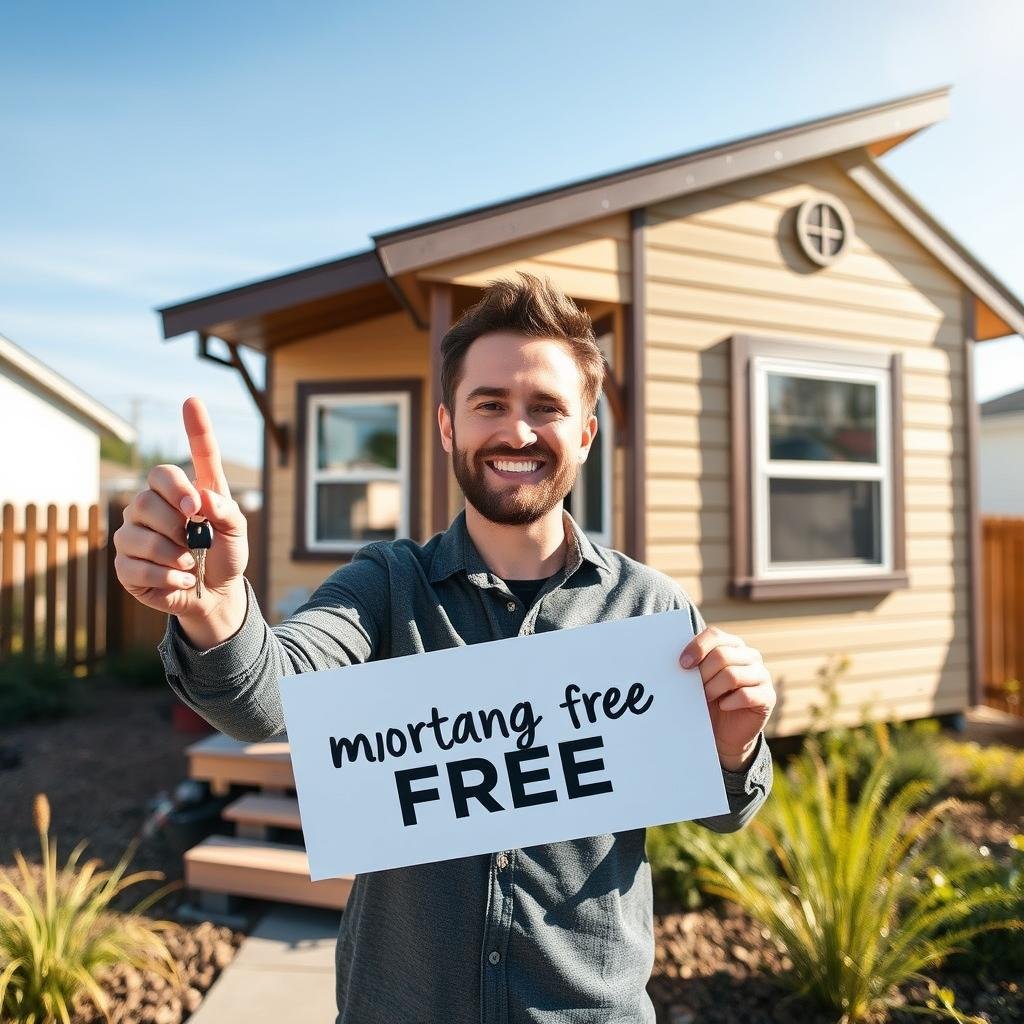
The average tiny home costs between $30,000 and $60,000, compared to the national median home price of over $350,000. This dramatic difference means lower mortgage payments or even the possibility of owning your home outright. Many tiny homeowners report eliminating housing debt entirely, freeing up resources for experiences, savings, or early retirement.
Environmental Impact
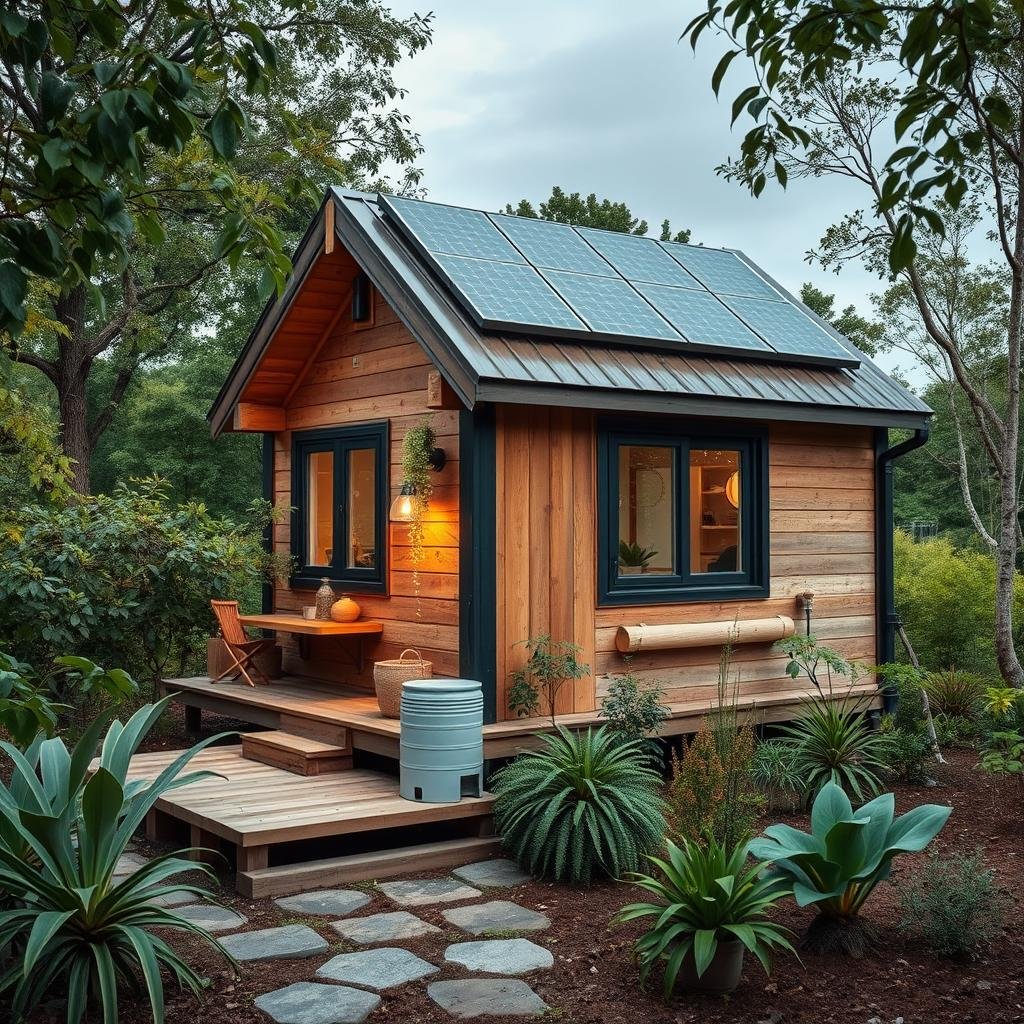
Tiny homes require fewer building materials and consume significantly less energy for heating, cooling, and maintenance. A typical tiny home uses about 7% of the energy of a conventional house. With options for solar power, composting toilets, and rainwater collection, these homes can dramatically reduce your carbon footprint while promoting sustainable living practices.
Simplified Living
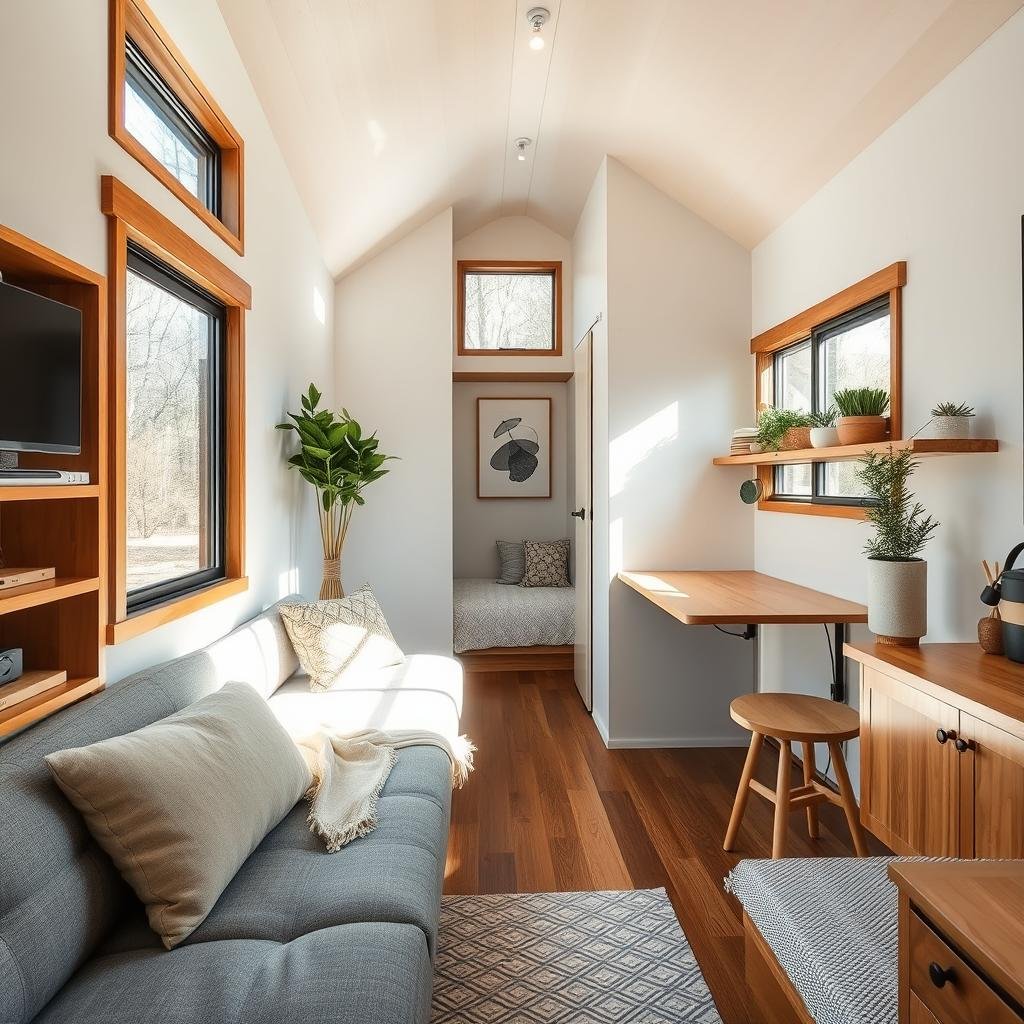
Embracing tiny living naturally encourages minimalism and intentional consumption. With limited space, every item must earn its place, leading to a more thoughtful relationship with possessions. Many tiny homeowners report reduced stress and increased happiness after downsizing, finding freedom in owning less and living more deliberately.
Ready to explore tiny home living?
Our comprehensive guide walks you through everything you need to know before taking the leap into tiny home ownership.
Clever Design Innovations for Small Spaces
The beauty of tiny home design lies in its ingenious solutions to space limitations. Architects and designers have revolutionized small-space living through thoughtful innovations that maximize functionality without sacrificing comfort.
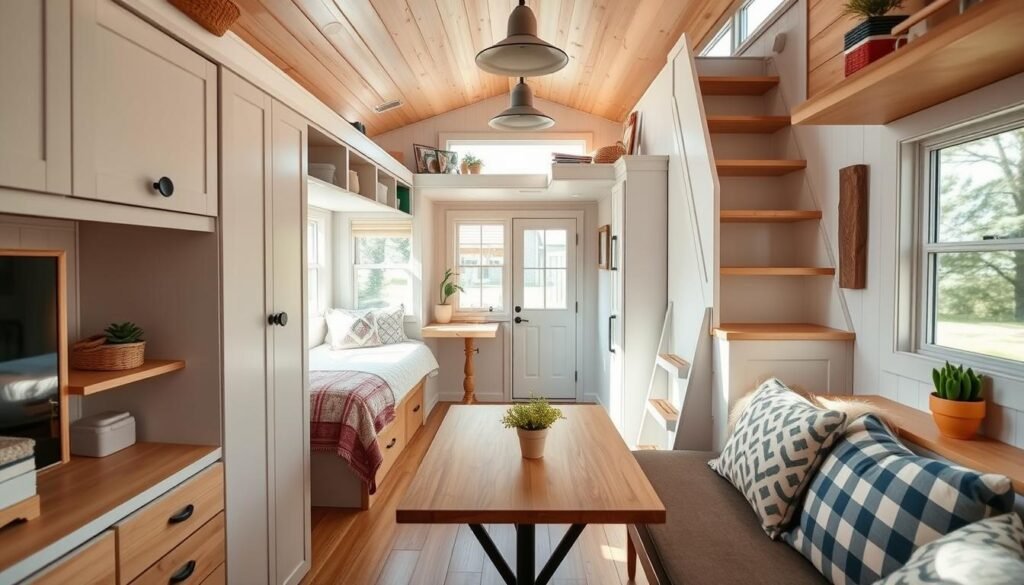
Multi-Functional Furniture
In tiny homes, furniture must work twice as hard. Popular solutions include sofa beds, murphy beds that fold into walls, dining tables that convert to desks, and coffee tables with adjustable heights. These transformable pieces allow a single room to serve multiple purposes throughout the day, effectively doubling your usable space.
Vertical Space Utilization
When floor space is limited, the key is to build upward. Loft sleeping areas, high-mounted storage cabinets, and wall-mounted organizers take advantage of vertical space that would otherwise go unused. Many tiny homes feature ceiling heights of 10-13 feet to create a sense of openness while providing practical vertical storage options.
Built-In Storage Solutions
Custom-built storage is the secret weapon of successful tiny homes. Stairs that double as drawers, benches with hidden compartments, and walls with recessed shelving eliminate the need for bulky standalone furniture. These integrated solutions maintain clean lines and open space while providing ample storage for essentials.
Space-Expanding Design Elements
Strategic use of windows, mirrors, and light colors creates the illusion of more space. Large windows not only bring in natural light but also visually extend the interior to the outdoors. Mirrors reflect light and views, making rooms feel larger, while light color palettes on walls and furniture help spaces feel more open and airy.
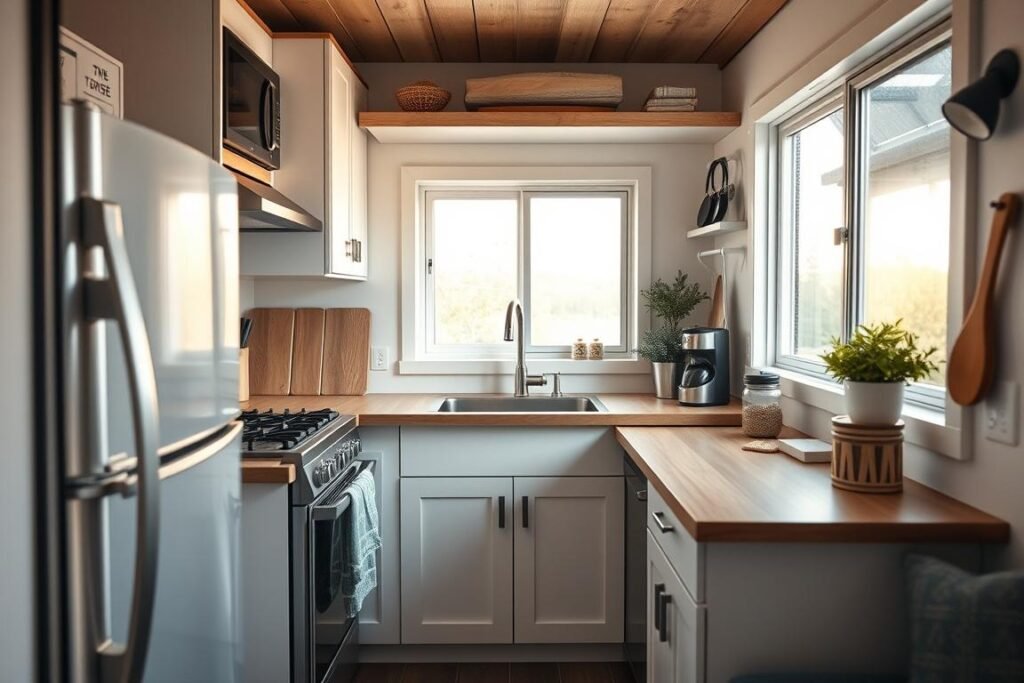
Planning your tiny home design?
Our design checklist helps you identify the most important space-saving features for your lifestyle.
Tiny Homes vs. Traditional Housing: The Cost Breakdown
Understanding the financial implications of tiny home living compared to conventional housing can help you make an informed decision about whether this lifestyle is right for you.
| Expense Category | Average Tiny Home | Average Apartment | Average House |
| Purchase/Build Cost | $30,000-$60,000 | $150,000-$400,000 | $250,000-$500,000+ |
| Monthly Mortgage | $200-$500 | $800-$2,000 | $1,200-$3,000+ |
| Utilities (monthly) | $35-$100 | $100-$250 | $200-$400 |
| Property Tax (annual) | $0-$1,000 | $1,500-$3,000 | $2,000-$10,000+ |
| Maintenance (annual) | $500-$1,500 | $500-$2,000 | $3,000-$10,000 |
| Insurance (annual) | $500-$1,000 | $300-$800 | $800-$2,500 |
Beyond the initial purchase price, tiny homes offer significant ongoing savings. The reduced square footage translates to lower utility bills, property taxes, and maintenance costs. Many tiny homeowners report saving 50-80% on monthly expenses compared to their previous living situations.
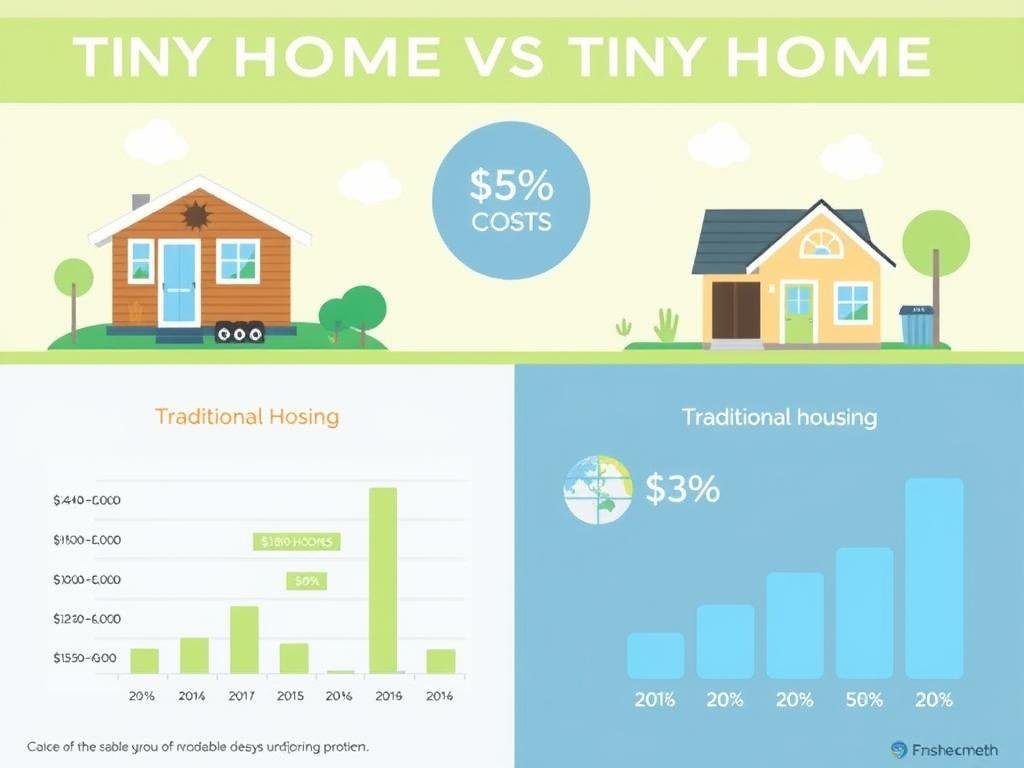
Environmental Impact and Sustainability Features
Tiny homes aren’t just good for your wallet—they’re also kind to the planet. The environmental benefits of tiny living extend from construction through daily operation and maintenance.
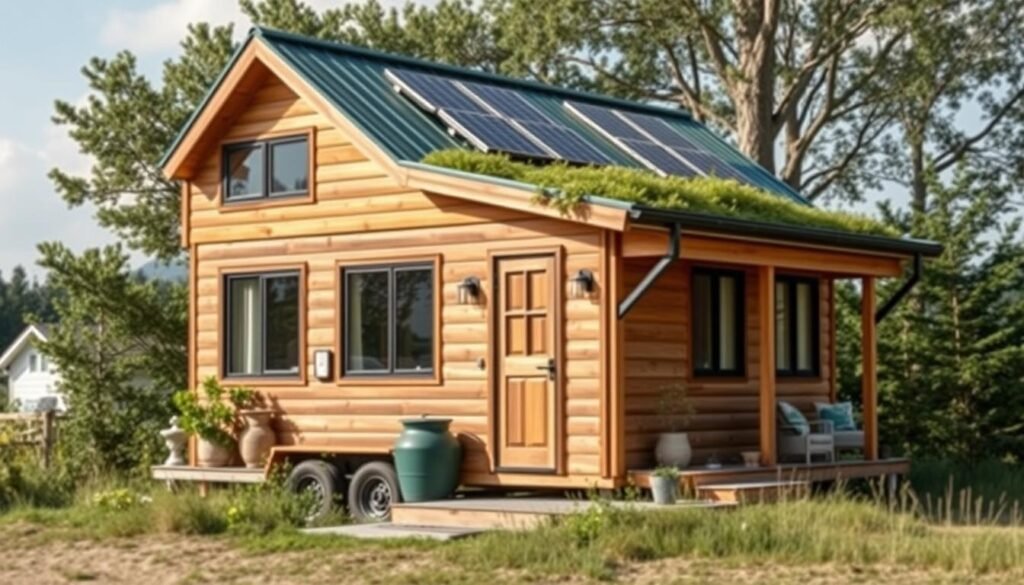
Environmental Benefits
- Reduced building materials (average tiny home uses 85-90% fewer materials)
- Lower energy consumption (7-10% of conventional home energy use)
- Smaller carbon footprint (average reduction of 45% per household)
- Less land disruption and habitat destruction
- Encourages mindful consumption and reduced waste
- Easier integration of renewable energy systems
Environmental Considerations
- Transportation impacts for tiny homes on wheels
- Potential challenges with water conservation
- Waste management systems require careful planning
- Some building materials may not be eco-friendly
- Winter heating efficiency varies by climate and design
Popular Sustainability Features in Modern Tiny Homes
Energy Systems
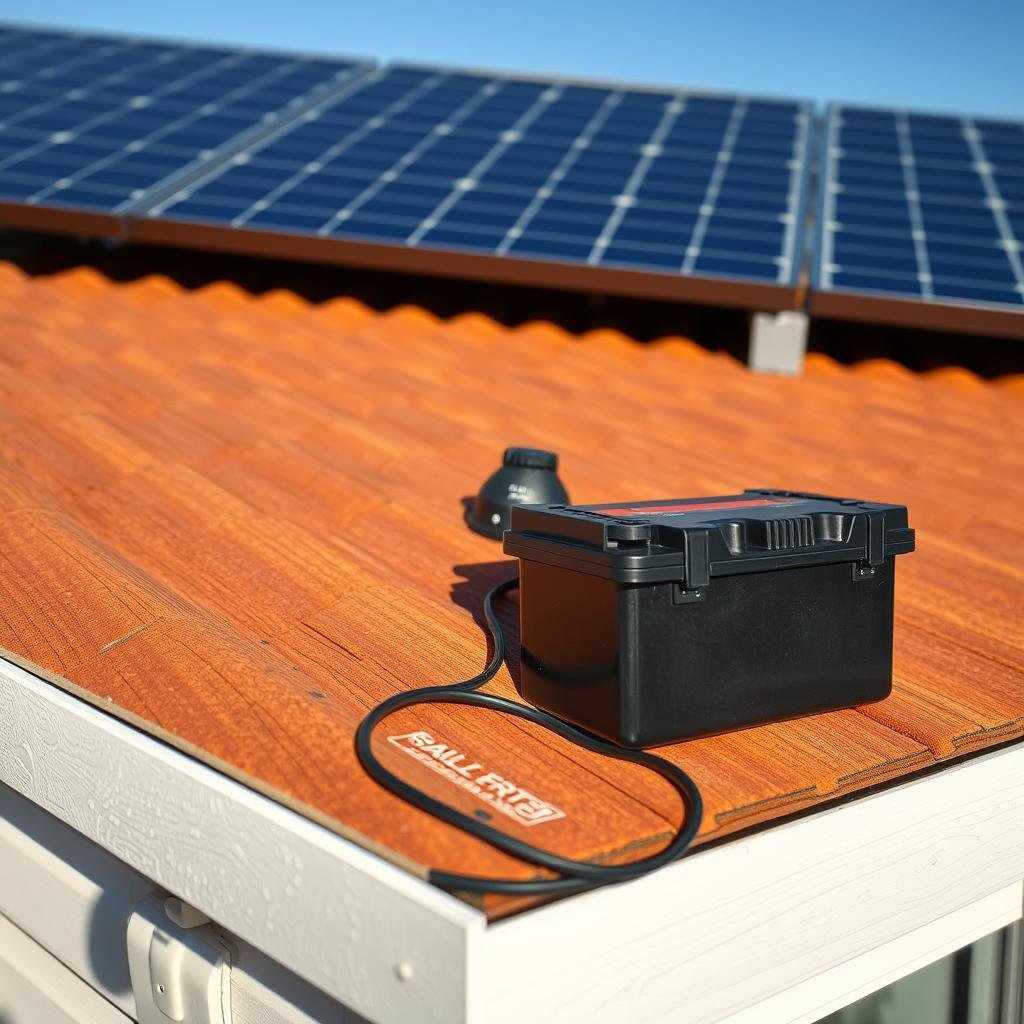
Solar panels (often 4-8 panels), mini-split HVAC systems, LED lighting, propane or induction cooktops, and energy-efficient appliances designed for boats and RVs.
Water Systems
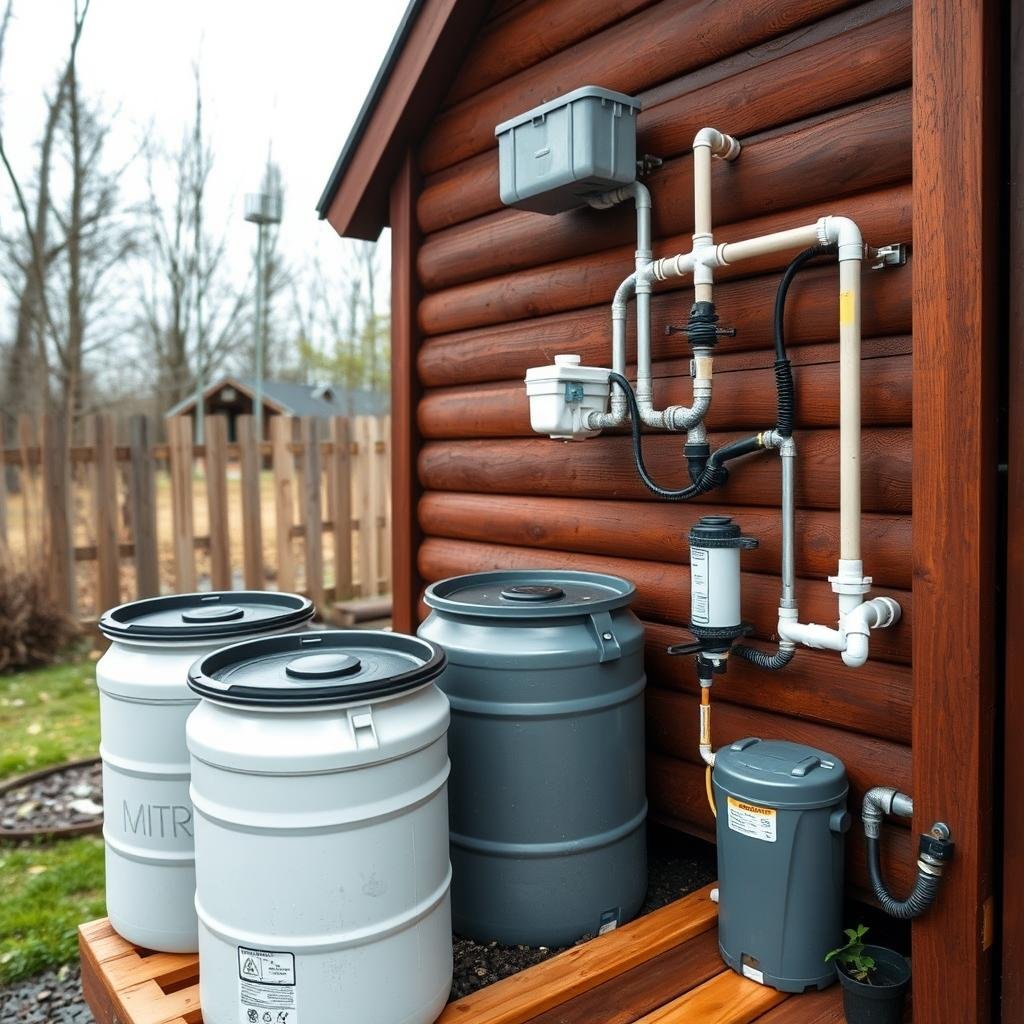
Rainwater collection, greywater recycling, low-flow fixtures, composting toilets, and on-demand water heaters that eliminate standby energy loss.
Building Materials
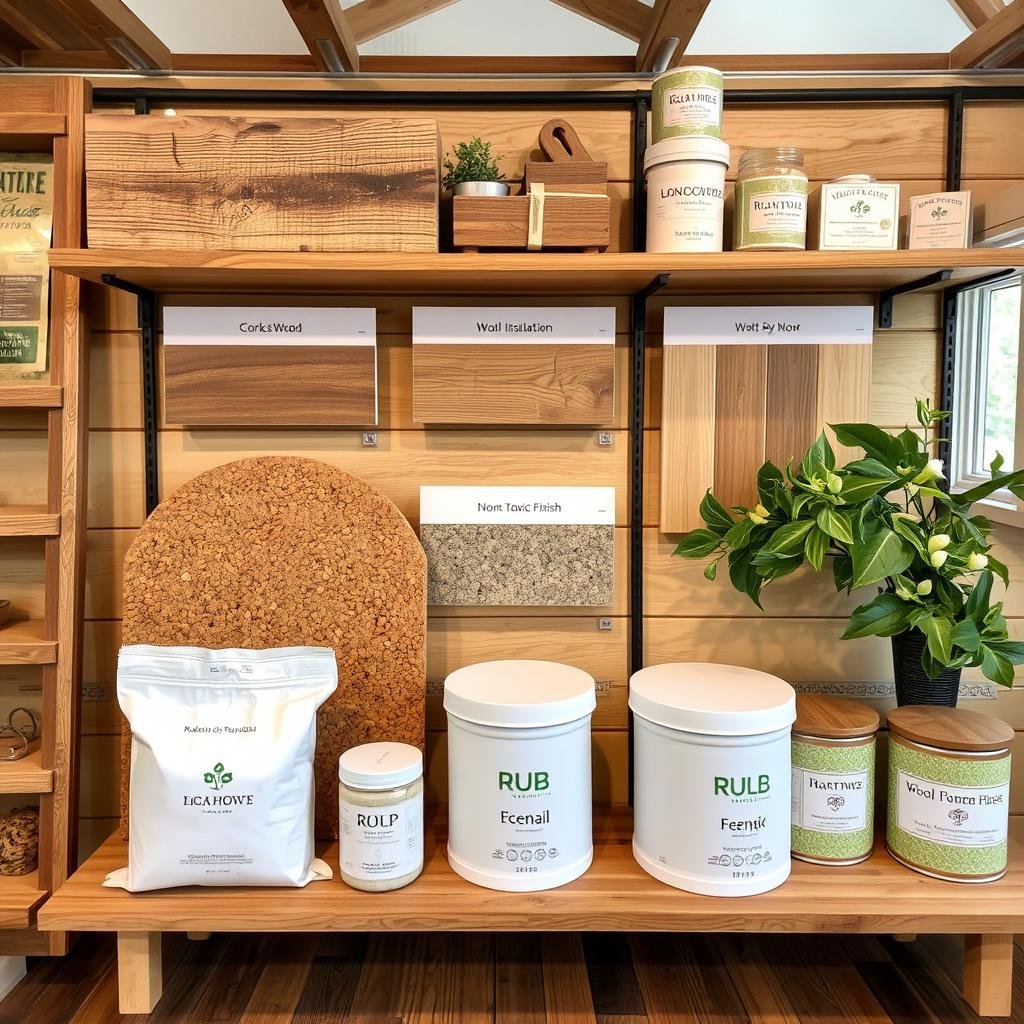
Reclaimed wood, sustainable insulation (wool, cotton, hemp), non-toxic finishes, metal roofing with high recycled content, and locally-sourced materials.
Navigating the Challenges of Tiny Home Living
While the benefits of tiny homes are substantial, this lifestyle isn’t without its challenges. Understanding these potential hurdles can help you prepare for a successful transition to tiny living.
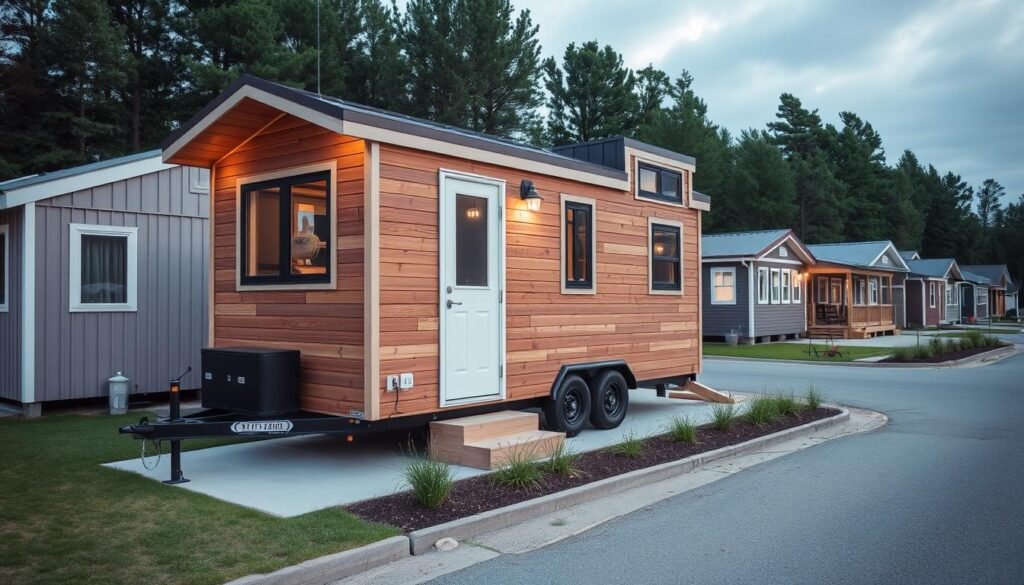
Zoning and Legal Considerations
Perhaps the most significant challenge for tiny home enthusiasts is navigating the complex landscape of zoning laws and building codes. Many municipalities have minimum square footage requirements for permanent dwellings that exceed tiny home dimensions. Additionally, some areas restrict living in RVs or mobile structures full-time.
Solutions are emerging, however. Some jurisdictions have created specific provisions for tiny homes, while others allow them as ADUs (Accessory Dwelling Units) on properties with existing homes. Organizations like the American Tiny House Association and HUD are working to update regulations to accommodate this growing housing trend.
Space Limitations and Storage Challenges
Living in 100-400 square feet requires significant lifestyle adjustments. Many new tiny homeowners struggle with downsizing possessions and adapting to limited storage. Daily activities like cooking, entertaining, and even basic movement require thoughtful coordination in shared spaces.
Successful tiny homeowners recommend a gradual downsizing process before moving in, investing in quality multi-functional furniture, and developing systems for regular decluttering. Many also utilize external storage solutions for seasonal items or create outdoor living spaces to extend their usable area.
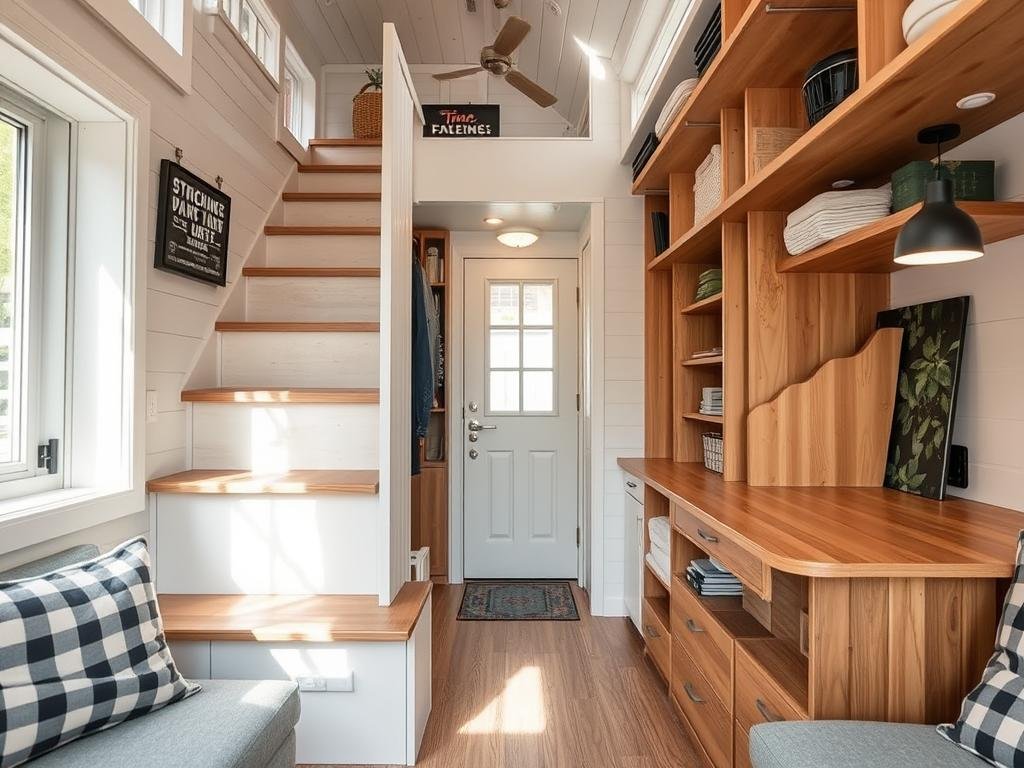
Financing and Insurance Hurdles
Traditional mortgages are often unavailable for tiny homes, particularly those on wheels. Many banks consider them recreational vehicles rather than permanent dwellings, limiting financing options. Similarly, insurance can be challenging to secure, with policies falling somewhere between RV, mobile home, and traditional homeowners insurance.
Specialized lenders are emerging to fill this gap, offering loans specifically for tiny homes. Organizations like the Consumer Financial Protection Bureau provide guidance on navigating these financial considerations.
Real-Life Tiny Home Success Stories
The tiny home movement is filled with inspiring stories of people who have successfully embraced this alternative lifestyle. Their experiences offer valuable insights for anyone considering the transition.
The Millers: Early Retirement Through Downsizing
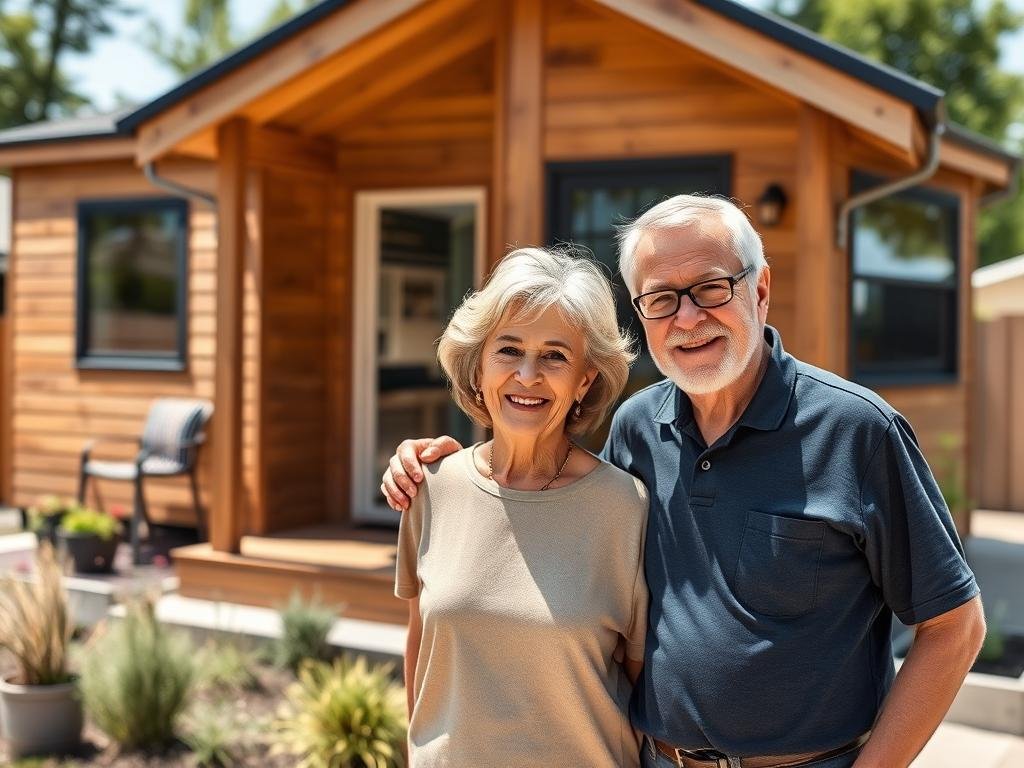
After 30 years in a 2,800 sq ft suburban home, Linda and Tom Miller sold their house and built a 380 sq ft tiny home for $75,000. The move eliminated their mortgage and reduced monthly expenses by 70%, allowing them to retire five years earlier than planned. They now travel extensively and report higher satisfaction with their simplified lifestyle.
“We spent decades accumulating things we rarely used,” says Linda. “Now everything we own has purpose, and we have the freedom to focus on experiences rather than maintenance.”
Sarah Chen: Urban Professional Escaping Rent Cycles

At 29, Sarah was spending 45% of her income on rent in Seattle. After researching alternatives, she invested $42,000 in a custom tiny home on wheels. She arranged to park it on a friend’s property for $350/month, cutting her housing costs by more than half. The home’s mobility also allowed her to take a remote job and work from different locations.
“I was tired of paying thousands in rent with nothing to show for it,” Sarah explains. “My tiny home is an asset I own, and it’s given me financial breathing room to build savings and travel.”
The Jacksons: Family of Four in 400 Square Feet
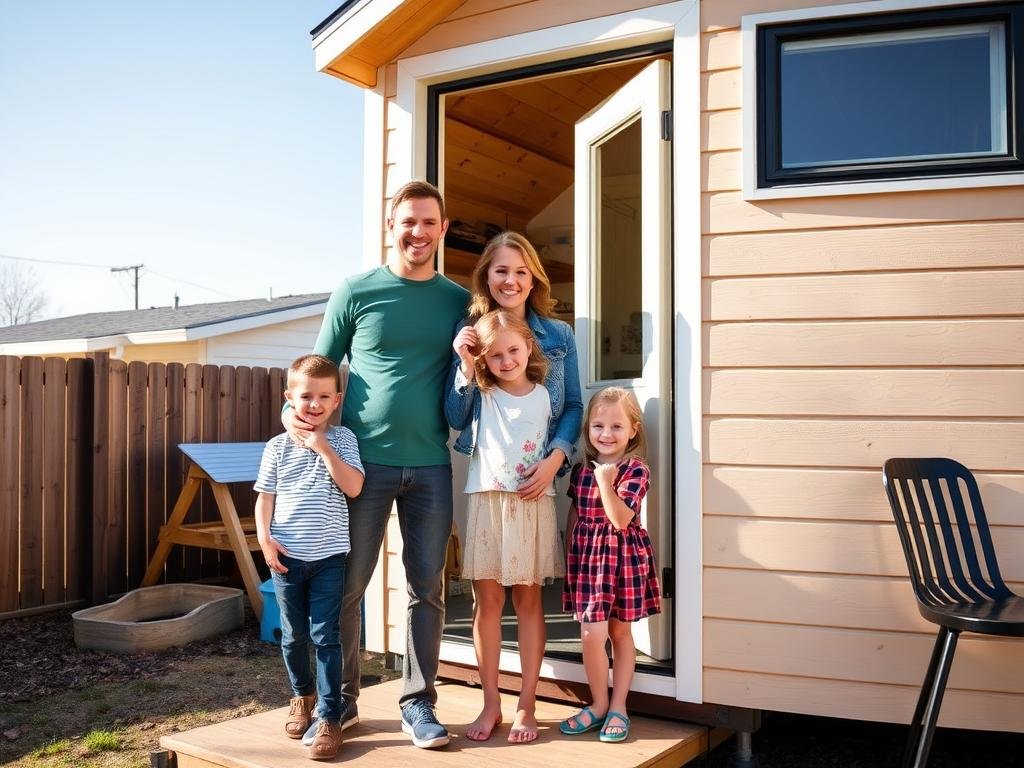
When Michael and Kara Jackson had their second child, they decided to challenge conventional wisdom about family space needs. They designed a 400 sq ft tiny home with ingenious space-saving features, including bunk beds, a homeschooling area, and ample outdoor living space. Their property costs were reduced by 65%, allowing Kara to homeschool the children.
“People are surprised that we don’t feel cramped,” Michael notes. “The kids spend more time outdoors, we’re more connected as a family, and we’ve eliminated most of our debt. It’s challenging sometimes, but the benefits far outweigh the sacrifices.”
Frequently Asked Questions About Tiny Homes
Are tiny homes legal in all states?
Tiny home regulations vary significantly by state, county, and even city. Some areas have embraced tiny homes with specific ordinances, while others have restrictive zoning that makes them difficult to place legally. Tiny homes on wheels often face different regulations than those on foundations. Research local zoning laws carefully before purchasing or building.
How much does a tiny home typically cost?
Costs range widely based on size, materials, and whether you build yourself or hire professionals. DIY tiny homes can cost as little as ,000-,000 for basic models, while professionally built homes typically range from ,000-0,000. Luxury tiny homes with high-end finishes can exceed 0,000. These figures don’t include land costs, which vary by location.
Where can I park or place a tiny home?
Options include: private land (with appropriate zoning approval), tiny home communities (growing in popularity), RV parks (for RVIA-certified homes), backyard placement as an ADU (where permitted), and rural areas with fewer restrictions. Some people arrange to place tiny homes on family or friends’ property, sometimes exchanging rent for property maintenance or other services.
How do tiny homes connect to utilities?
Tiny homes can connect to standard utilities (water, sewer, electricity) like conventional homes when placed permanently. For tiny homes on wheels, RV-style hookups are common. Many tiny homeowners opt for off-grid solutions including solar power, composting toilets, and rainwater collection systems. The best approach depends on your location, climate, and lifestyle preferences.
Can families live comfortably in tiny homes?
Many families successfully live in tiny homes, though it requires thoughtful design and organization. Homes for families typically include dedicated sleeping areas, efficient storage systems, and often emphasize outdoor living space. The lifestyle encourages family bonding but also requires clear communication about privacy and personal space needs.
Do tiny homes hold their value?
Value retention depends on several factors. Tiny homes on foundations typically appreciate similarly to conventional homes, especially in desirable locations. Tiny homes on wheels may depreciate like RVs unless they’re exceptionally well-built with quality materials. The growing popularity of tiny living has created a strong resale market for well-maintained homes.
Embracing the Tiny Home Lifestyle
The tiny home movement represents more than just a housing trend—it’s a shift in how we think about living spaces, possessions, and our environmental impact. Whether motivated by financial freedom, environmental concerns, or the desire for a simpler life, tiny home enthusiasts are pioneering alternative approaches to housing that challenge conventional wisdom.
As regulations evolve and more resources become available, tiny homes are becoming an increasingly viable option for diverse populations. From young professionals seeking affordable housing to retirees looking to downsize, the appeal of these compact dwellings continues to grow.
If you’re considering a tiny home, take time to research thoroughly, visit existing homes, and honestly assess your lifestyle needs. The transition requires adjustment, but for many, the benefits of financial freedom, environmental sustainability, and simplified living make it well worth the effort.
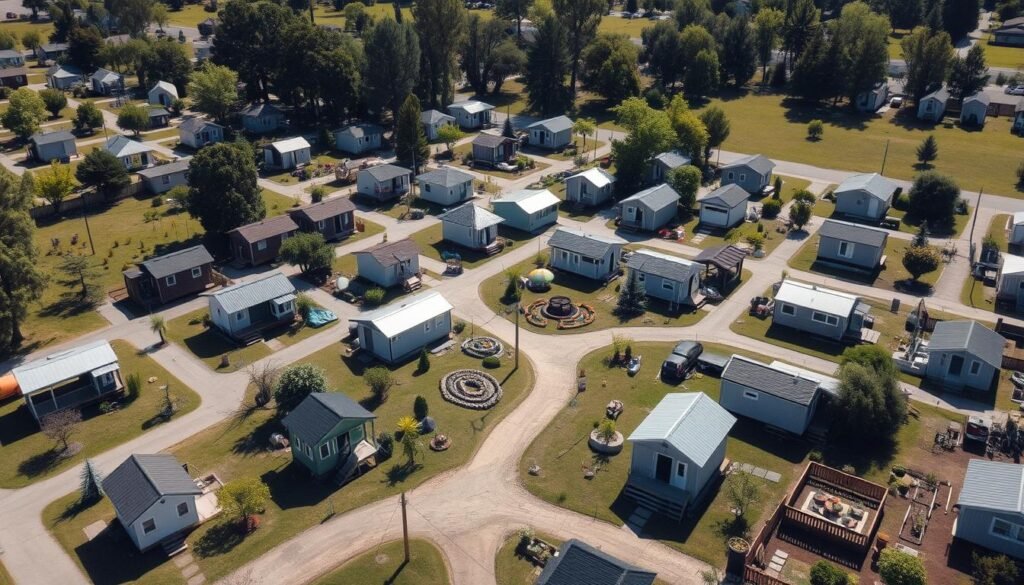
Join our tiny home community
Get monthly updates on tiny home designs, legal developments, and success stories from our community of tiny home enthusiasts.
